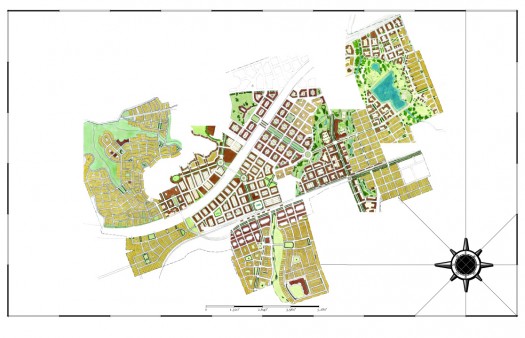Leander, Texas
When Leander, Texas, became the Austin region’s fastest growing municipality, they did what any city would do: They looked to similar and surrounding places for guidance. Unfortunately, what they found was disheartening. Sprawl, it seemed, was the adverse consequence of rapid growth. And they didn’t want it.
So they came to us. And, for the most part, didn’t even have to pay for it.
 Perhaps the first project of its kind in the country, Leander is home to a diverse mix of landowners who’ve come together in partnership with city government to create and harness long-term potential in their collective property. Recognizing the value inherent in traditional neighborhood developments (TNDs) and form-based/Transect-based codes, the group engaged PlaceMakers to help guide them through two steps of PlaceMakers core services: Planning and Urban Design; and Coding.
Perhaps the first project of its kind in the country, Leander is home to a diverse mix of landowners who’ve come together in partnership with city government to create and harness long-term potential in their collective property. Recognizing the value inherent in traditional neighborhood developments (TNDs) and form-based/Transect-based codes, the group engaged PlaceMakers to help guide them through two steps of PlaceMakers core services: Planning and Urban Design; and Coding.
And, perhaps most remarkably, 85% of this publicly initiated and led effort was directly funded by the private sector.
Seeking to leverage the often overlooked power of established political connections, PlaceMakers coordinated the Leander initiative in partnership with Gateway Planning, a local, complementary New Urbanist firm. Together, the two firms orchestrated a widely anticipated public charrette to envision the 2,000 acre property at the level of major street network, blocks and civic spaces, and, within approximately 50% of the property, at the level of local street and lot. Furthermore, because the city is located on a regional commuter rail line, considerable elements of transit oriented design (TOD) were incorporated, as were principles of environmental sensitivity.
Thereafter, the two firms designed a comprehensive master regulating plan, together with calibration of the model SmartCode, for the entire planning area.
Ultimately, the project affirmed the premise that conscientious placemaking is about more than just aesthetics. Beyond just the emotionally-based value inherent in well designed places, the Leander project also offered value of the financial variety. In spades. An independent analysis of the project area, comparing the tax basis under the new plan with what was anticipated under the previous, conventional zoning, found a net value increase of almost $1 billion.
Yes, that’s billion with a “b”.









